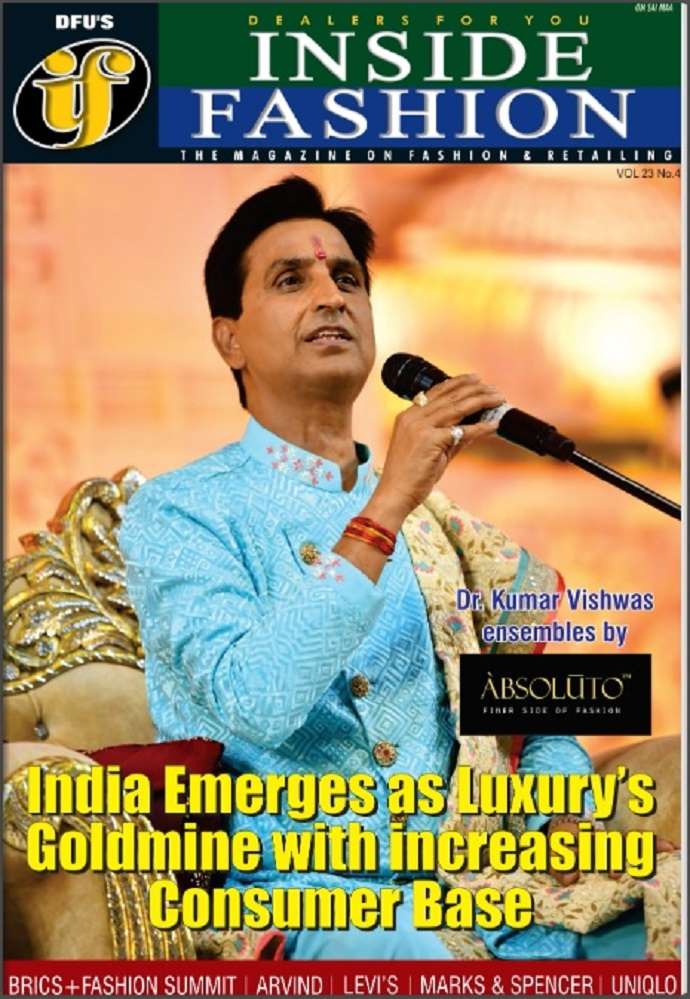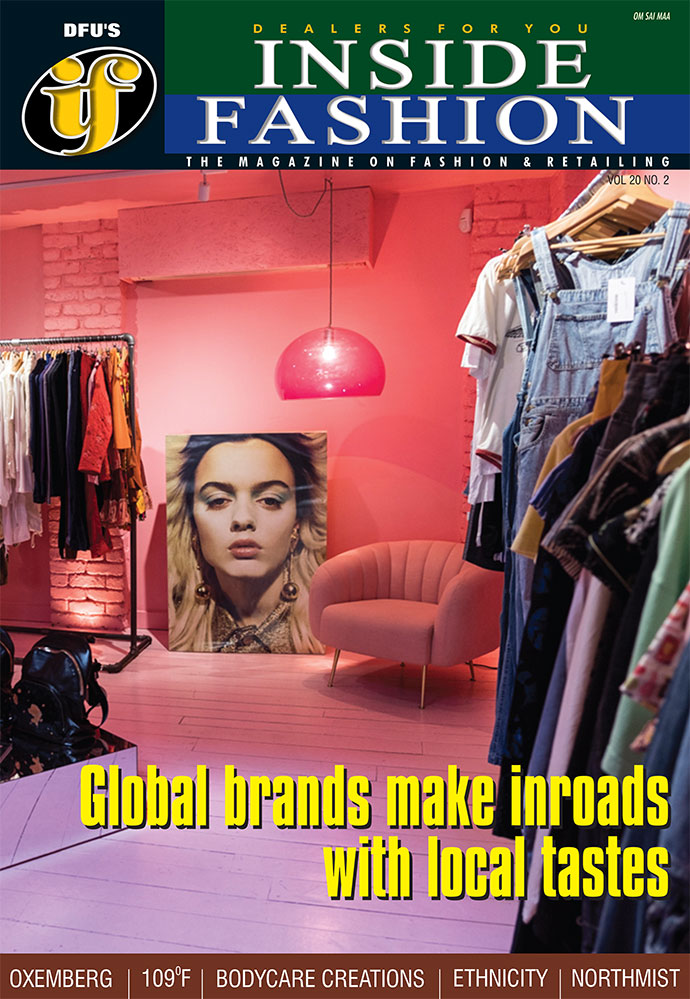Deloitte Insights 2025: Gen Z drives the $109B sustainable fashion wave in India

14 November 2025, Mumbai
The rapid growth of India’s apparel market is not just a story of rising incomes it’s the story of rising consciousness. A generation shaped by climate anxiety, digital fluency, and social media activism is rewriting what fashion means in the world’s most populous nation. Gen Z and millennials are forcing domestic and global brands alike to realign from mass production to moral production.
The Global Trifecta: Money, meaning, and well being
As per ‘The Deloitte Global 2025 Gen Z and Millennial Survey’, which covered 23,000 respondents across 44 countries, a universal trifecta defines this generation Money, Meaning, and Well-being. Globally, both cohorts are reshaping fashion consumption around ethics and purpose.
Read our latest issue
Table: Global apparel trends among Gen Z and millennials
|
Apparel trends |
Gen Z |
Millennials |
Interpretation |
|
Avoiding Fast Fashion |
35% |
39% |
A significant rejection of volume-driven, exploitative models—brands face growing pressure to prove sustainable credentials. |
|
Willing to Pay More for Sustainable Products |
65% |
63% |
Price elasticity now includes ethics; sustainability has moved from niche preference to mainstream expectation. |
|
Growth of Secondhand Apparel Market |
15%+ CAGR |
— |
The resale economy is outpacing traditional apparel growth (4.2% CAGR), signaling a structural consumer shift towards longevity and reuse. |
This mindset directly impacts apparel:
Fast fashion rejection: Around 35 per cent of Gen Z and 39 per cent of millennials globally are actively avoiding fast fashion due to ethical and environmental concerns.
Premium for purpose: Approximately 65 per cent of Gen Z and 63 per cent of Millennials worldwide are willing to pay more for products they deem sustainable or ethically sourced.
The resale shift: The secondhand apparel market is globally experiencing over 15 per cent CAGR, significantly outpacing the conventional market (approx. 4.2 per cent CAGR), as consumers seek financial and ethical value.
These table points reveal a global focus from seasonal turnover to sustainable ownership, a trend that Indian consumers are amplifying with local urgency.
India’s Young consumers: Anxious, aware, and assertive
India’s Gen Z and Millennials who made up 809 respondents in Deloitte’s India sample mirror global trends but exhibit stronger emotional and behavioural intensity. Economic optimism coexists with environmental dread, creating what Deloitte calls a purpose paradox.
Table: Gen Z/millennials in India compared to the global average
|
Consumer Metric |
India Gen Z/Millennial |
Global Average |
Implication for Apparel |
|
Worried About the Environment |
84% (Gen Z), 83% (Millennial) |
65% (Gen Z), 63% (Millennial) |
Heightened eco-anxiety will fuel ethical fashion and sustainability-based brand narratives. |
|
Willingness to Pay More for Sustainable Products |
65% (Gen Z), 63% (Millennial) |
64% (Both) |
Demonstrates strong monetizable intent for premium sustainable labels. |
|
Value Real-World Experience |
94% (Gen Z), 97% (Millennial) |
Lower Global Avg. |
Drives growth in athleisure, streetwear, and experiential brand formats. |
|
GenAI Usage in Daily Work |
85% (Both) |
55% (Both) |
Positions India as a digitally advanced apparel market—expect AI-driven discovery, transparency tools, and virtual try-ons. |
India’s youth are not passive consumers; they are active change agents. Their heightened environmental awareness and digital fluency combine to create a uniquely informed consumption culture. For apparel brands, this means success will hinge not only on aesthetics or affordability but on proof of purpose visible through transparent supply chains, ethical labor practices, and traceable sourcing.
Fashion’s New Twin Engines: premium purpose and value volumes
The rise and rise of luxury
The premium and accessible luxury segments are redefining aspiration in India. Deloitte and Bain’s data suggest a 74 per cent CAGR for luxury goods, a figure almost inconceivable in mature markets.
• Aspirational spending: A young, status-driven consumer base is expanding beyond traditional HNIs, using luxury as a statement of self-identity and achievement.
• Investment logic: Gen Z’s preference for “investment pieces” reflects a shift from impulse to intention. Luxury apparel is being viewed as a financial and ethical asset durable, resalable, and aligned with personal values.
Luxury’s growth is not just about indulgence it’s about insurance. For an eco-conscious generation, high-end purchases offer both quality assurance and resale potential, perfectly merging sustainability with social signaling.
The Value Market: Where volume meets vigilance
Despite the luxury rush, 98 per cent of India’s apparel sales in 2025 will still come from the non-luxury segment. This vast base anchored by players like Zudio, Max, and Reliance Retail faces a new paradox: serve the masses, but do it responsibly.
• Competition intensifies: International fast-fashion giants (H&M, Uniqlo) are expanding aggressively, while domestic chains dominate Tier II, III cities.
• Sustainability scrutiny: As consumer advocacy grows, value brands must adapt introducing recycling programs, green fibers, and ethical production transparency.
The value segment is no longer a sustainability laggard. Brands that can merge affordability with responsibility through scalable green production will win both market share and consumer trust.
The indigenous circular push
India’s emerging circular economy isn’t mimicking Western thrift rather it’s reinventing it through local authenticity.
Artisan-led D2C brands: Small labels are integrating vegan materials and fair-wage artisan collaborations, linking sustainability with livelihood empowerment.
Localized ethics: Instead of secondhand resale, the focus is on regenerative design producing less, better, and locally.
This homegrown sustainability movement is India’s answer to global fast fashion a model where cultural identity and climate consciousness co-exist. By embracing both planet and people, these brands embody Gen Z’s desire for consumption with conscience.
The market’s next decade
India’s apparel boom is inseparable from its digital leap. The e-commerce ecosystem is not just a distribution network it’s a values marketplace where traceability and storytelling
Table: India's apparel market overview
|
Market Metric |
Source/Forecast |
Interpretation |
|
Apparel Market Revenue (2025) |
$109.5 bn |
Unicommerce / Statista |
|
Long-Term CAGR (2025–2034) |
4% |
IBEF |
|
Online Lifestyle Market CAGR (2023–2028) |
10-12% |
Bain & Co / Myntra |
|
E-commerce Share (by 2030) |
>60% |
Occ Strategy |
The table reveals India’s fashion growth is digitally compounded. The combination of mobile-first consumers, social commerce, and AI-enabled personalization is transforming how purpose is packaged and purchased. For Gen Z, transparency is not a feature it’s a default expectation.
Thus the $109 billion apparel opportunity is not defined by quantity but by consciousness. The Indian Gen Z consumer is signaling a shift from buying clothes to buying credibility.
For brands, the winners of this green revolution will be those that marry traceability with trend, inclusivity with innovation, and profit with purpose. In India’s fashion future, style is no longer what you wear, it’s what you stand for.
Latest Publications

























